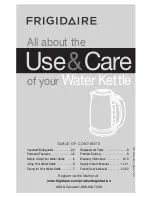
we know what‘s cooking
9/69
Docum
ent
1
0000
028
013
-DO
C
-00
0-0
0-EN
CAUTION!
Valves on the kettle bowl must not be opened, when the kettle is pressurized.
CAUTION!
For safety reasons, the kettle must not be filled to within 5 cm from the rim. Otherwise, there is
an increased risk of over boiling and emptying the kettle will be difficult.
CAUTION!
During use, no steam may be discharged from the safety valve. If this happens, disconnect the
power supply at the main switch immediately and make sure that the kettle is repaired before tak-
en into use again.
CAUTION!
During normal use, hot air/steam will be discharged from the venting valve. In the event of a fault,
steam may be discharged from the safety valve.
Note that any steam that is discharged could cause burn injuries.
CAUTION!
Connections between the steam jacket and the outside must not be blocked. This applies, for ex-
ample, to the safety valve, venting valve, vacuum valve and level valves.
CAUTION!
It is forbidden to stay behind the kettle, when it is in use.
CAUTION!
The kettle must not be moved when its contents are so hot that there is a risk of scalding.
CAUTION!
If a dangerous situation should arise involving the kettle, press the emergency stop button im-
mediately. This will stop all functions. The power is applied again by manually turning the emer-
gency stop button.
(This only applies to kettles with a stirrer)
CAUTION!
Stainless steel surfaces are protected by a thin layer of chromoxide, which is vulnerable to dam-
age by use of steel implements and exposure to chlorine, as found in normal kitchen salt for ex-
ample.
Never add salt to cold water in a kettle. Wait until the water is hot, when the salt will dissolve. This
will prevent salt crystals settling at the bottom of the kettle where they can damage the chromox-
ide layer, exposing the steel to corrosion.
CAUTION!
If the kettle is on castors, the castor brakes must be engaged when the kettle is in use.











































